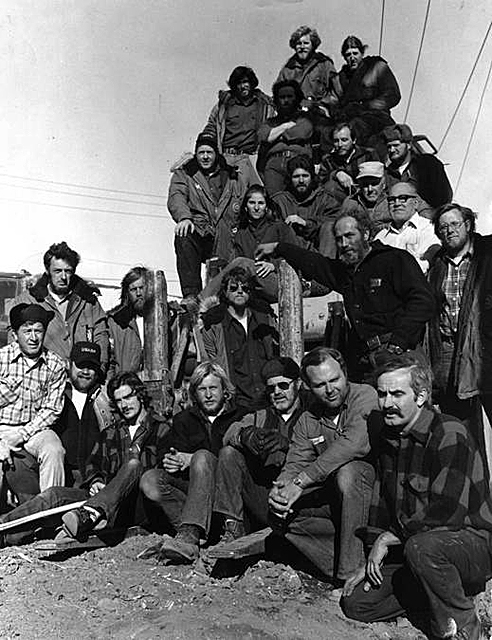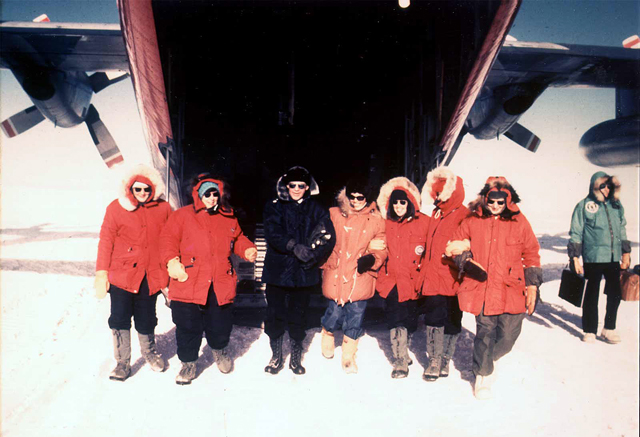Stepping into historyWomen mark 40 years of working in the U.S. Antarctic ProgramPosted November 13, 2009
The year 1969 was one of those watershed periods in American history. The counterculture was in full bloom with flower power and rock & roll. Neil Armstrong fulfilled Pres. John F. Kennedy's promise to send a man to the moon by the end of the decade when Apollo 11 landed on its cratered surface. Women were agitating for and winning equal treatment at home, in the workplace and in the halls of government. 
Photo Courtesy: Jerry and Elena Marty
Elena Marty, center, was one of the few women who worked in Antarctic in 1974-75.
But in the first half of1969, U.S. women were still effectively barred from living and working in Antarctica. That was about to change when a handful of women arrived on the continent for the 1969-70 field season. Six of the seven would further make history when they became the first women to step foot at the geographic South Pole on Nov. 12, 1969. Today, more than 50 women work at the South Pole for the 2009-10 summer season. The last bastion of male supremacy, as some had called Antarctica, was finally breached. In succeeding years, women slowly trickled in to the U.S. Antarctic Program Features in this series include:
|



For USAP Participants |
For The Public |
For Researchers and EducatorsContact UsU.S. National Science FoundationOffice of Polar Programs Geosciences Directorate 2415 Eisenhower Avenue, Suite W7100 Alexandria, VA 22314 Sign up for the NSF Office of Polar Programs newsletter and events. Feedback Form |


